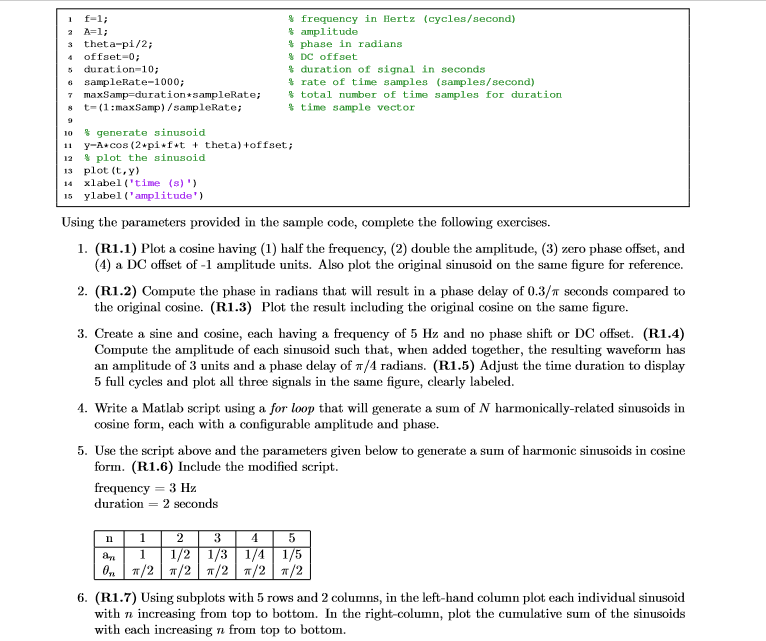Answered step by step
Verified Expert Solution
Question
1 Approved Answer
MATLAB: Please, I need help with this: f-1; % frequency in Hertz (cycles/second) % amplitude A-1; s theta-pi/2 4 offset-0; s duration-10; e sampleRate-1000; 7
MATLAB:
Please, I need help with this:

Step by Step Solution
There are 3 Steps involved in it
Step: 1

Get Instant Access to Expert-Tailored Solutions
See step-by-step solutions with expert insights and AI powered tools for academic success
Step: 2

Step: 3

Ace Your Homework with AI
Get the answers you need in no time with our AI-driven, step-by-step assistance
Get Started


